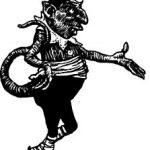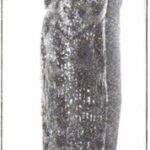May 17, 2002
Curling has come to Tennessee. For those of you who don’t live in Canada or a Scandinavian country and missed the 2002 Olympic coverage, "curling" is an ancient sport played on ice that involves getting a 400-pound stone (or approximately 29 "stone" in countries that have adopted the metric system to describe anything other than the amount of 14 pounds) into a red circle. Or something like that. Why’d we wait until summer, three months after the Olympics were over to adopt curling? Hey, it took centuries for curling to make it to the United States in the first place, so give us a break.
Anyway, no offense to our neighbors to the North, in this case our VERY distant neighbors, but I don’t want curling to be a sport in Tennessee. It’s bad enough that parts of the South are importing hockey teams, even though most areas only have three days out of the year when it’s cold enough for water to freeze, and, let’s face it, sliding around on a slick surface and getting into fistfights with other people in the South isn’t a "sport", it’s "driving in the rain". The truth is I don’t have anything against curling as a sport. What bothers me is the appropriation in the United States of Canadian culture. Well, selected aspects of it, anyway.
Embracing Canada is a kind of multiculturalism lite, taking in a culture that’s different enough to be "other" yet similar enough to be non-threatening. And it’s a way of assuaging those feelings of guilt over the not-so-distant past when people here in the South would say things like, "I have nothing against Canadians, but I wouldn’t want my sister to date one." But there’s something more ominous to what’s being called "the curling craze" (which explains those kids I saw in the street with golf clubs and a bowling ball).
Although I never did hear the results, I’m pretty sure the United States didn’t do very well in the Olympic curling competition. While I’m never happy about losing, I can live with it as long as we’re good at other things. I’m a democratic kind of guy, and I believe it’s healthy to spread the gold around. Besides, are we so insecure that we have to beat everybody at everything? Isn’t enough that we can go into the curling competition and beat, for instance, Morocco, whose players are all used to practicing on sand? And if Morocco feels sad and insecure, then all they have to do is look to their neighbors to the North–Portugal.
Enjoy this week’s offerings.
In 1927, in Vienna, Austria, a candy maker by the name of Eduard Haus, III, developed a candy to conceal adult smokers’ bad breath. In fact, the target market for the candy, labeled as a compressed breath mint, consisted of adult smokers. The original flavor for the candy, which is still available today, was Peppermint.
When marketers extracted the first, middle, and the last letters of the German word for Peppermint, Pfefferminz, they were left with PEZ, and the name stuck. Convenient, headless PEZ dispensers surfaced in the late 1940, and allowed the smoker to pop a PEZ to freshen his breath at any given time.
In 1952, the PEZ revolution spread to the United States, the land of opportunity, or opportunism, however you choose to look at it. Marketing gurus, after extensive research with children, concluded that the adult smokers’ mint should be replaced by a fruit-flavored children’s candy, complete with a gimmick. They determined that PEZ dispensers with character heads were just the vehicle to drive up sales, and they were right!
Flavors of the ever popular candies PEZ, which are compact, flavored sugar pellets, have come and gone over the years as peoples’ tastes have changed. The flavors Chlorophyll, Eucalyptus, and Flower, were destined to be discontinued from the start. Other flavors no longer with us include Coffee, Licorice, Menthol, and Cinnamon.
The current availability of certain flavors of PEZ depends upon where you live. For example, in the United States, your choices are limited to Grape, Lemon, Orange, and Peppermint, while our Canadian neighbors have an additional fruit flavor, cherry, at their disposal. Overseas, in Spain, Apple and Raspberry flavors may be purchased, while in Hungary and Thailand, Chocolate flavor may be added to your stash. One additional type of PEZ exists; the vitamin enriched IZO PEZ.
Since 1952, PEZ dispensers have become collectors’ items, with some rare dispensers carrying hefty price tags. So rare is the Big Top Elephant model, that one collector recently paid $3,600.00 to become the elephant’s proud new owner! Over 275 different PEZ character heads have been designed since 1952, with as many as 48 different models on the market at any one time. In terms of popularity, the Mickey Mouse and the Santa Claus models top the list year after year. One set of models, that of the Flintstone cartoon characters, flew off of the shelves so quickly, that the rush to buy left the most popular one, Dino, the purple dinosaur, in short supply.
Technology’s attempt to jump on the PEZ dispenser bandwagon has proven far less successful. One company produces a battery-powered dispenser, complete with a top that spins and pops candy into your mouth, and another produces the PEZ watch, which dispenses candy out of one side of the watch when a PEZ attack hits.
No doubt, PEZ will introduce new flavors and new dispensers in the future, but no matter what changes are made, PEZ has become so deeply engrained in our culture, that it is certainly here to stay.






Facebook Comments